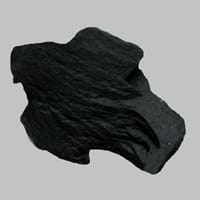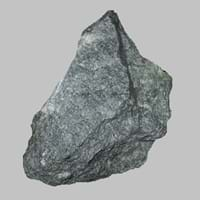Definition
Lignite is a soft brownish coal which shows traces of plants and is intermediate between bituminous coal and peat
It is a metamorphic magnesium rich rock because it is composed of the mineral talc
Discoverer
Unknown
Unknown
Etymology
From French, Latin lignum wood + -ite1
From 17th century, because of its greasy feel and use like a soap
Class
Sedimentary Rocks
Metamorphic Rocks
Sub-Class
Durable Rock, Soft Rock
Durable Rock, Soft Rock
Group
Not Applicable
Not Applicable
Other Categories
Coarse Grained Rock, Fine Grained Rock, Medium Grained Rock, Opaque Rock
Fine Grained Rock, Opaque Rock
Texture
Amorphous, Glassy
Polished
Color
Black, Brown, Dark Brown, Grey, Light to Dark Grey
Black, Black to Grey, Green, Grey
Durability
Durable
Durable
Appearance
Veined or Pebbled
Dull, Banded and Foilated
Interior Uses
Not Yet Used
Bathrooms, Decorative Aggregates, Homes, Interior Decoration
Exterior Uses
Not Yet Used
As Facing Stone, Garden Decoration
Other Architectural Uses
Not Yet Used
Curbing
Construction Industry
for Road Aggregate, Steel Production
Manufacture of Magnesium and Dolomite Refractories
Medical Industry
Not Yet Used
Taken as a Supplement for Calcium or Magnesium
Antiquity Uses
Not Yet Used
Artifacts, Jewellery, Monuments, Sculpture
Commercial Uses
Electricity Generation
Cemetery Markers, Creating Artwork, Gemstone, Jewelry, Manufacture of Soap, Solvents, Dyes, Plastics and Fibres, Production of Lime, Source of Magnesia (MgO)
Types
Xyloid Lignite or Fossil Wood and Compact Lignite or Perfect Lignite
Not Available
Features
Generally rough to touch, Helps in production of Heat and Electricity, Used as fossil fuel
Host Rock for Lead
Archaeological Significance
Monuments
Not Yet Used
Used
Famous Monuments
Not Applicable
Christ the Redeemer in Rio de Janeiro, Stonehenge in English county of Wiltshire
Sculpture
Not Yet Used
Used
Famous Sculptures
Not Applicable
Data Not Available
Figurines
Not Yet Used
Used
Formation
Coal formation takes place due to accumulation of plant debris in a swamp environment. The Coal formation process continues, as peat turns into lignite brown or black coal at increasing heat and pressure.
Soapstone is a talc-schist, which is a type of metamorphic rock and it is largely composed of the mineral talc and is thus rich inmagnesium.
Mineral Content
Not Available
Albite, Apatite, Biotite, Calcite, Carbonate, Clay Minerals, Hornblende, Ilmenite, Micas, Plagioclase, Pyroxene, Quartz
Compound Content
Carbon, Hydrogen, Nitrogen, Oxygen, Sulphur
CaO, Mg, MgO
Types of Metamorphism
Not Applicable
Burial Metamorphism, Cataclastic Metamorphism, Contact Metamorphism, Hydrothermal Metamorphism, Impact Metamorphism, Regional Metamorphism
Types of Weathering
Biological Weathering, Chemical Weathering, Mechanical Weathering
Not Applicable
Types of Erosion
Chemical Erosion, Water Erosion, Wind Erosion
Not Applicable
Grain Size
Medium to Fine Coarse Grained
Fine Grained
Fracture
Conchoidal
Conchoidal
Porosity
Highly Porous
Less Porous
Luster
Dull to Vitreous to Submetallic
Greasy
Compressive Strength
Not Available
Cleavage
Non-Existent
Perfect
Toughness
Not Available
1
Specific Gravity
1.1-1.4
2.86
Transparency
Opaque
Opaque
Density
800-801 g/cm3
2.8-2.9 g/cm3
Resistance
Heat Resistant
Heat Resistant, Pressure Resistant
Deposits in Eastern Continents
Asia
Bangladesh, Burma, Cambodia, China, India, Indonesia, Kazakhstan, Malaysia, Mongolia, Pakistan, Turkey, Vietnam
China, India, Indonesia, Japan, North Korea, Russia, Saudi Arabia, Singapore, South Korea, Sri Lanka, Tajikistan, Thailand
Africa
Botswana, Kenya, Morocco, Mozambique, South Africa, Tanzania
Egypt, Ethiopia, Ghana, South Africa, Western Africa
Europe
Belgium, Bulgaria, England, France, Germany, Greece, Hungary, Kosovo, Netherlands, Norway, Poland, Romania, Serbia, Slovakia, Slovenia, The Czech Republic, Ukraine, United Kingdom
Austria, England, Finland, France, Germany, Greece, Spain, Sweden, Switzerland, United Kingdom
Others
Not Yet Found
Not Yet Found
Deposits in Western Continents
North America
Canada, Mexico, USA
Canada, USA
South America
Brazil, Chile, Colombia, Venezuela
Colombia
Deposits in Oceania Continent
Australia
New South Wales, Queensland, Victoria
Central Australia, New Zealand, Queensland
All about Lignite and Soapstone Properties
Know all about Lignite and Soapstone properties here. All properties of rocks are important as they define the type of rock and its application. Lignite belongs to Sedimentary Rocks while Soapstone belongs to Metamorphic Rocks.Texture of Lignite is Amorphous, Glassy whereas that of Soapstone is Polished. Lignite appears Veined or Pebbled and Soapstone appears Dull, Banded and Foilated. The luster of Lignite is dull to vitreous to submetallic while that of Soapstone is greasy. Lignite is available in black, brown, dark brown, grey, light to dark grey colors whereas Soapstone is available in black, black to grey, green, grey colors. The commercial uses of Lignite are electricity generation and that of Soapstone are cemetery markers, creating artwork, gemstone, jewelry, manufacture of soap, solvents, dyes, plastics and fibres, production of lime, source of magnesia (mgo).










